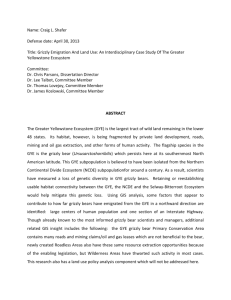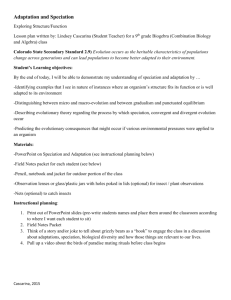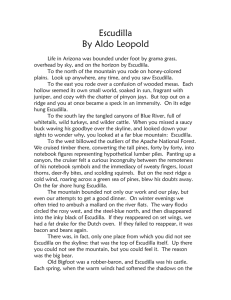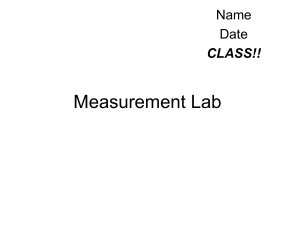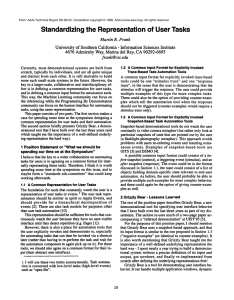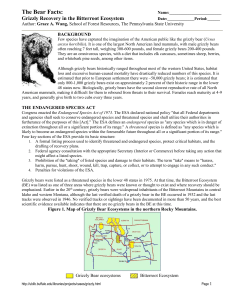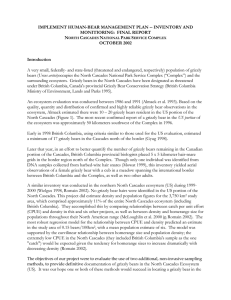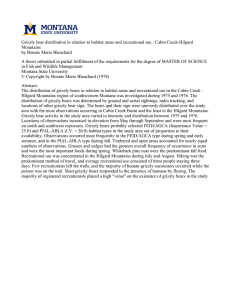ABSTRACT The Yellowstone Grizzly Bear Policy Process
advertisement
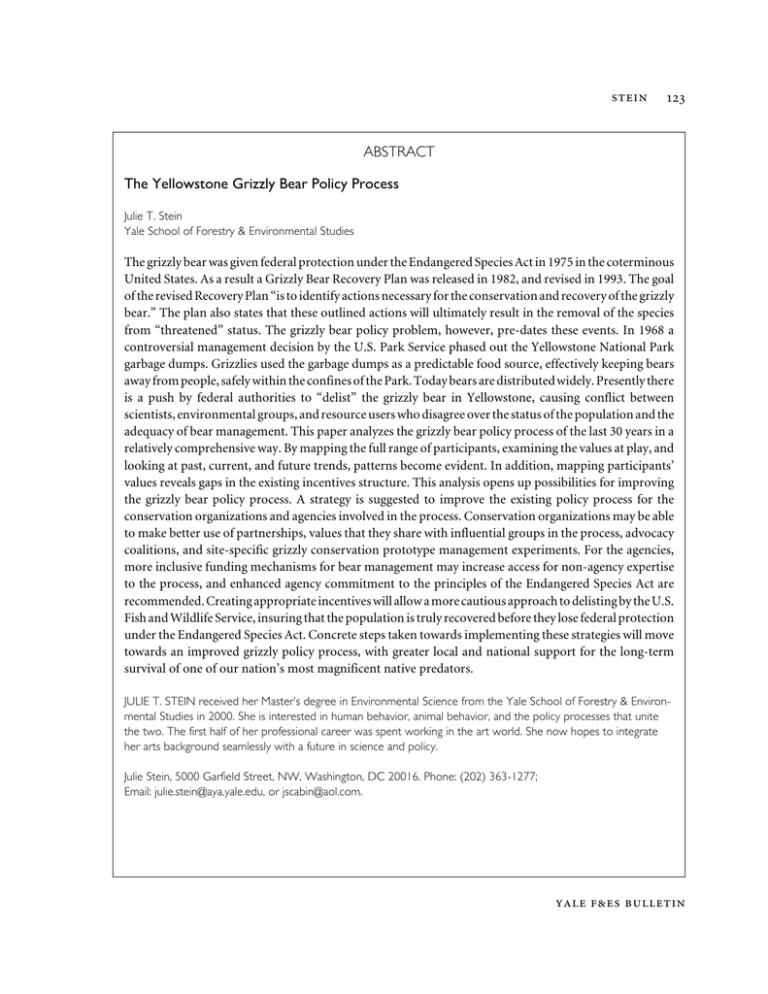
ABSTRACT The Yellowstone Grizzly Bear Policy Process Julie T. Stein Yale School of Forestry & Environmental Studies The grizzly bear was given federal protection under the Endangered Species Act in 1975 in the coterminous United States. As a result a Grizzly Bear Recovery Plan was released in 1982, and revised in 1993. The goal of the revised Recovery Plan “is to identify actions necessary for the conservation and recovery of the grizzly bear.” The plan also states that these outlined actions will ultimately result in the removal of the species from “threatened” status. The grizzly bear policy problem, however, pre-dates these events. In 1968 a controversial management decision by the U.S. Park Service phased out the Yellowstone National Park garbage dumps. Grizzlies used the garbage dumps as a predictable food source, effectively keeping bears away from people, safely within the confines of the Park. Today bears are distributed widely. Presently there is a push by federal authorities to “delist” the grizzly bear in Yellowstone, causing conflict between scientists, environmental groups, and resource users who disagree over the status of the population and the adequacy of bear management. This paper analyzes the grizzly bear policy process of the last 30 years in a relatively comprehensive way. By mapping the full range of participants, examining the values at play, and looking at past, current, and future trends, patterns become evident. In addition, mapping participants’ values reveals gaps in the existing incentives structure. This analysis opens up possibilities for improving the grizzly bear policy process. A strategy is suggested to improve the existing policy process for the conservation organizations and agencies involved in the process. Conservation organizations may be able to make better use of partnerships, values that they share with influential groups in the process, advocacy coalitions, and site-specific grizzly conservation prototype management experiments. For the agencies, more inclusive funding mechanisms for bear management may increase access for non-agency expertise to the process, and enhanced agency commitment to the principles of the Endangered Species Act are recommended. Creating appropriate incentives will allow a more cautious approach to delisting by the U.S. Fish and Wildlife Service, insuring that the population is truly recovered before they lose federal protection under the Endangered Species Act. Concrete steps taken towards implementing these strategies will move towards an improved grizzly policy process, with greater local and national support for the long-term survival of one of our nation’s most magnificent native predators. JULIE T. STEIN received her Master’s degree in Environmental Science from the Yale School of Forestry & Environmental Studies in 2000. She is interested in human behavior, animal behavior, and the policy processes that unite the two. The first half of her professional career was spent working in the art world. She now hopes to integrate her arts background seamlessly with a future in science and policy. Julie Stein, 5000 Garfield Street, NW, Washington, DC 20016. Phone: (202) 363-1277; Email: julie.stein@aya.yale.edu, or jscabin@aol.com.

